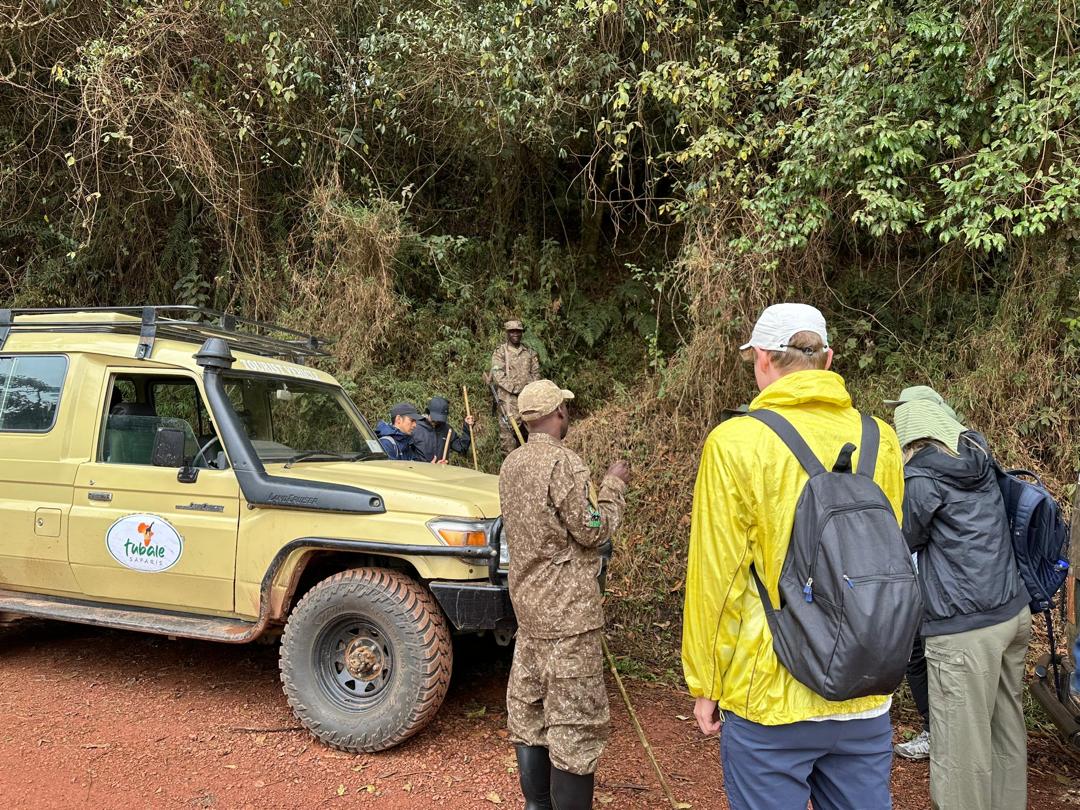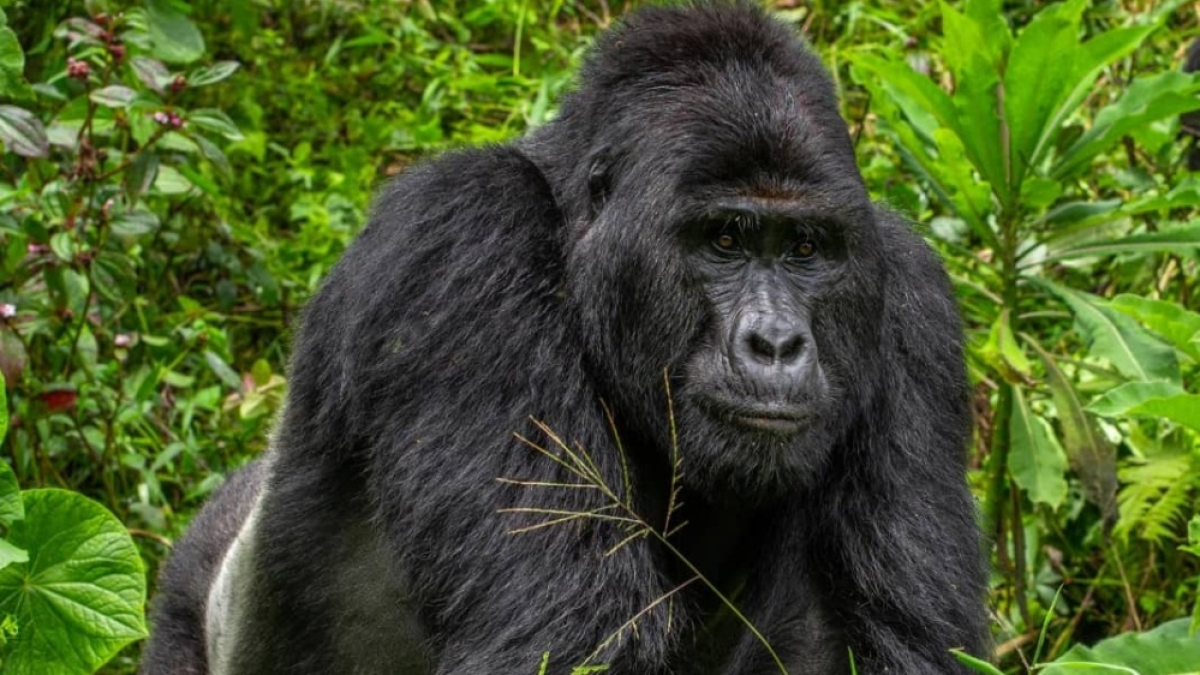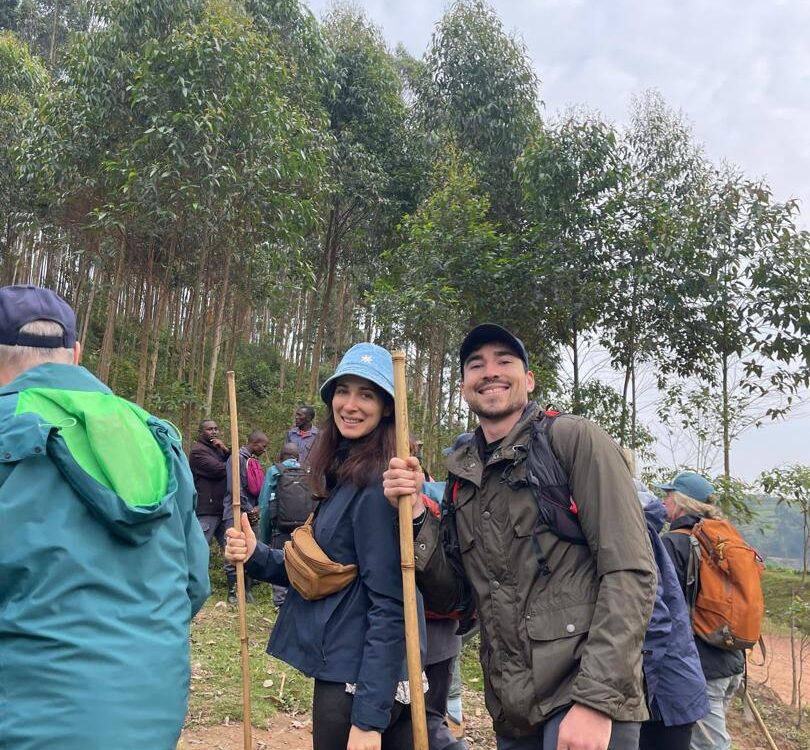
How Many Days for Gorilla Trekking in Uganda?
November 27, 2024
Why Is Rwanda Gorilla Trekking So Expensive?
January 31, 2025Is It Safe to Go Gorilla Trekking in Uganda?
Gorilla trekking in Uganda is one of the most sought-after wildlife experiences in the world. Travelers from across the globe visit Uganda to witness the majestic mountain gorillas in their natural habitat, an unforgettable experience that often creates lifelong memories. However, before embarking on such an adventure, many potential trekkers ask an essential question: Is it safe to go gorilla trekking in Uganda?
In this comprehensive article by Tubale Safaris, we will explore the various factors that influence the safety of gorilla trekking in Uganda, from health precautions and park security to environmental considerations. We will also address some of the common concerns and provide valuable tips to ensure a safe and enjoyable experience.

Is It Safe to Go Gorilla Trekking in Uganda?
Understanding Gorilla Trekking in Uganda
Gorilla trekking in Uganda involves traveling to protected national parks, specifically Bwindi Impenetrable National Park and Mgahinga Gorilla National Park, to observe the endangered mountain gorillas. These parks are located in the southwestern part of Uganda, nestled in the misty mountains. The trekking process is highly regulated, and only a limited number of permits are issued each day to ensure the protection of the gorillas and the environment.
Each trek is led by a trained guide and armed park rangers, ensuring that visitors are kept safe while in the presence of the gorillas. This controlled approach minimizes risks and guarantees that trekkers enjoy an encounter that’s both thrilling and safe.
Gorilla Trekking Safety Protocols
Safety is a priority for Uganda Wildlife Authority (UWA) and tour operators like Tubale Safaris. Every aspect of the gorilla trekking process, from the issuance of permits to the interaction with the gorillas, is carefully planned to ensure the safety of both visitors and wildlife.
Here are some of the key safety measures in place:
- Limited Number of Trekkers: Only a small number of visitors are allowed to trek in each park per day. This helps reduce the stress on the gorilla groups and ensures a more intimate, controlled experience.
- Professional Guides: Treks are led by experienced, licensed guides who are well-trained in tracking gorillas, understanding gorilla behavior, and maintaining safety for both trekkers and gorillas.
- Park Rangers and Armed Guards: In addition to the guides, park rangers and armed guards are assigned to ensure trekkers’ safety throughout the experience. They also help monitor the gorillas to ensure they remain undisturbed.
- Safety Briefings: Before the trek begins, visitors receive thorough safety briefings, explaining the do’s and don’ts of trekking, proper behavior around gorillas, and emergency protocols in case of unexpected situations.
- Strict Rules on Gorilla Interaction: One of the primary safety protocols is that visitors must maintain a distance of at least 7 meters (about 23 feet) from the gorillas. This helps reduce the risk of disease transmission and ensures that the gorillas are not disturbed.
Health and Medical Safety During Gorilla Trekking
While gorilla trekking is relatively safe, there are some health considerations that trekkers must be aware of before embarking on this adventure. As the mountain gorillas share 98% of their DNA with humans, diseases that affect humans can also affect gorillas. This is why it is crucial for visitors to adhere to strict health guidelines.
Key Health Guidelines for Gorilla Trekkers
- Mandatory Health Check: Before your trek, you will be required to fill out a health declaration form, ensuring that you are free from contagious diseases, especially respiratory infections. If you are feeling unwell, it’s advised that you postpone your trek to avoid endangering the gorillas.
- Covid-19 Precautions: In recent years, global health concerns such as Covid-19 have brought additional safety measures. Visitors may be required to present a negative Covid-19 test result before participating in trekking. Mask-wearing and social distancing protocols may also be in place, depending on the current health guidelines.
- Vaccinations: Travelers are encouraged to get vaccinations for diseases such as Hepatitis A, Hepatitis B, and Typhoid before visiting Uganda. A visit to a travel clinic for advice on vaccinations is recommended.
- Physical Fitness: Gorilla trekking involves walking through dense forests and sometimes steep terrains. While the trek is not necessarily strenuous, it does require a reasonable level of physical fitness. If you have health conditions such as heart problems, it’s important to consult with your doctor before booking a trek.
- Travel Insurance: To ensure comprehensive coverage, travelers are advised to secure travel insurance that includes medical evacuation in case of emergency.
Risks of Disease Transmission
Uganda has enacted strict policies to prevent the spread of diseases from humans to gorillas. For instance, anyone exhibiting cold-like symptoms, including coughing or sneezing, will not be allowed to trek. This is a critical safety measure to protect the gorillas, as diseases like human respiratory infections could prove fatal to them.
Safety of the Gorilla Trekking Experience
Many potential trekkers express concern about their personal safety during the trek itself. Here are some important factors that ensure your safety while trekking through Uganda’s forests:
Trekking in Protected Parks
The trekking trails in both Bwindi Impenetrable National Park and Mgahinga Gorilla National Park are well-maintained and carefully regulated by the Uganda Wildlife Authority. These parks are home to many other wildlife species, including elephants, buffaloes, and forest antelopes, but encounters with dangerous animals are rare.
Guides and park rangers are highly trained in wildlife safety and will ensure you are always on the safest paths and avoid any potential risks, including unexpected wildlife encounters.
Gorilla Behavior and Safety
Mountain gorillas are generally peaceful and gentle creatures. They are not aggressive by nature but can become protective if they feel threatened. This is why maintaining the 7-meter distance is essential for safety. The guides and rangers monitor the gorillas’ behavior closely and will guide trekkers on how to interact safely.
Emergency Protocols
While the likelihood of encountering danger is minimal, in the event of an emergency, park rangers are trained to manage such situations. Trekking groups are always accompanied by rangers armed with tranquilizers for non-lethal interventions. If you are feeling unwell or if any emergency arises during your trek, there are emergency evacuation procedures in place, including the use of stretcher teams for rapid transport out of the forest.
Communication Systems
In case of emergencies, communication is facilitated through radio equipment and mobile phones, ensuring that trekkers can be assisted quickly. The Uganda Wildlife Authority has established emergency procedures in both Bwindi and Mgahinga to ensure that trekkers receive the help they need.
Safety During Travel to and Around Uganda
Uganda is generally a safe destination for travelers, with a well-established tourism infrastructure. However, it’s essential to be aware of basic safety practices during your trip to Uganda.
Transport and Travel
To ensure your safety, travel by reputable tour operators and licensed drivers who are familiar with the local terrain. If you are flying into Uganda, opt for Kampala or Entebbe as your point of arrival, where major international flights land.
Once in Uganda, driving to the trekking sites can take several hours, depending on where you are coming from. It’s important to travel with an experienced driver or a guide who knows the best routes and can ensure safe passage.
Security in the National Parks
Both Bwindi and Mgahinga are secure, well-patrolled parks, and the presence of armed rangers provides added security. These parks are also located far from major urban centers, reducing the risk of petty crime. Nonetheless, it’s important to always follow the safety instructions provided by your guide and park rangers.
Conclusion: Is Gorilla Trekking in Uganda Safe?
Yes, gorilla trekking in Uganda is a safe and well-regulated activity. With proper preparation, adherence to health and safety guidelines, and the support of experienced guides and rangers, you can enjoy the experience of a lifetime while minimizing any risks.
The safety measures in place, from health precautions to security protocols, ensure that trekkers can safely observe the incredible mountain gorillas without compromising their own safety or the welfare of the animals. As long as you follow the safety rules, your gorilla trekking adventure in Uganda will be both safe and unforgettable.
Book your trek with Tubale Safaris for an expertly guided, safe, and memorable gorilla trekking experience.







